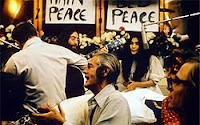Norwegian expressionist painter. I loved his painting, Madonna, which was depicted in my classmate's B/W film, then paid much attention to his work mainly through art books. On the way to Spain in 2001(?), I had a stop over in Zurich and visited an art museum, which possesses the largest number of Munch's art works outside of Norway. Most of his pieces were big, I think. My visit to Chicago last month was so refreshing and a moment to catch up with things. Among others, visiting Art Institute for the special exhibition of Munch was blissful. He, who lost his sister and mother early on, lived in depression and his emotional condition, influenced by the turbulent period of time in the late 19th century and the early 20th century, was greatly reflected in his work. In his early career, even until the early 1890, he seemed to employ techniques of impressionists and his selection of color was rather bright. But, from the mid-1890, his brush took very strong printing power and the co






